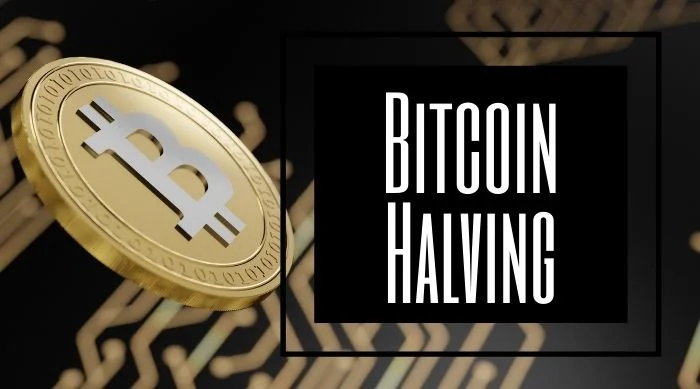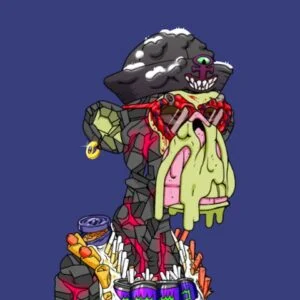Bitcoin Halving occurs when the payout for mining a new block is cut in half and happens after every 210,000 blocks (approximately 4 years). The first Bitcoin halving happened in 2012 and the next is predicted to occur in 2024. In 2008 the original reward for creating a block was 50 Bitcoin, and the currency has experienced three halvings since then. Currently the reward for a new block in the Bitcoin blockchain is just above six Bitcoin.

When halving first started, the “block height” for a single “Genesis Block” in 2009 was ONE. When the block height hit the first 210,000, it halved the previous 50 Bitcoin reward to 25. In 2016, Bitcoin halved again after reaching a block height of 420,000, with the reward down to 12.5.
Come 2020, Bitcoin halved again hitting 6.25, and it is expected to halve in 2024 for a block reward of just above 3 Bitcoin.
You read the above correctly–there are diminishing returns for mining Bitcoin as the halving continues. Those who adopted early will likely reap the most reward from their early involvement, but any gold rush (including Bitcoin) is limited by one key concept–there is no such thing as a limitless supply of gold, oil, or other commodities. The same is true of Bitcoin thanks to halving and the built-in supply limit.
Bitcoin Halving Dates History & Future Dates
A Bitcoin halving is scheduled to take place every 210,000 blocks. The next bitcoin halving is predicted to be on Jun 02, 2024 01:56:58 AM UTC. The Bitcoin block reward is scheduled to drop from 6.25 Bitcoin per block to 3.125 Bitcoin per block.
The last Bitcoin halving took place in 2020 at block 630,000 on May 11, 2020 7:23:43 PM UTC. At that time the Bitcoin block reward dropped from 12.5 BTC and cut in half to 6.25 BTC.
Bitcoin Halving Chart
| Halving # | Block Height | Block Reward | Date | ||||
| 8th Halving | 1,680,000 | 0.1953125 BTC | 2040 (projected) | ||||
| 7th Halving | 1,470,000 | 0.390625 BTC | 2036 (projected) | ||||
| 6th Halving | 1,260,000 | 0.78125 BTC | 2032 (projected) | ||||
| 5th Halving | 1,050,000 | 1.5625 BTC | 2028 (projected) | ||||
| 4th Halving | 840,000 | 3.125 BTC | Mar 02, 2024 01:56:58 AM UTC (projected) | ||||
| 3rd Halving | 630,000 | 6.25 BTC | May 11, 2020 7:23:43 PM UTC | ||||
| 2nd Halving | 420,000 | 12.5 BTC | July 9, 2016 4:46:13 PM UTC | ||||
| 1st Halving | 210,000 | 25 BTC | November 28, 2012 03:24:38 PM UTC | ||||
| 0 (Bitcoin Launch) | 1 (Genesis Block) | 50 BTC | January 9, 2009 2:54:25 AM UTC |
Bitcoin’s Hard Cap
There will never be more than 21 million bitcoin. This limit, known as the hard cap, is encoded in Bitcoin’s source code and enforced by nodes on the network. When the hard cap hits around 2040 the halving schedule will cease because there will be no more new bitcoins to be found. Miners, however, will still be incentivized to continue validating and confirming new transactions on the blockchain because the value of transaction fees paid to miners is expected to rise into the future, the reasons being that a greater transaction volume that has fees will be attached, and bitcoins will have a greater nominal market value.
Bitcoin Won’t Be Mined Forever
Bitcoin mining involves users creating new blocks on the blockchain, and there is a “block creation rate” that is readjusted every so many thousands of blocks. With each new block the available number of Bitcoins that could be mined gets closer to being reduced. How much closer?
There is a 50% reduction every 210,000 blocks. That could mean it’s only possible to mine Bitcoin for another four years before no more can be minted. Once the number of Bitcoins hits just under 21 million, the supply of new Bitcoins is expected to stop.
Is Halving Inevitable?
Assuming that no one changes the rules of the process, it’s likely that halving is unavoidable though the speed at which it happens may or may not meet expectations. Bitcoin requires multiple competing miners to solve a math puzzle to get the proper hash and this can take more or less time than is typical depending on circumstances.
If mining difficulty is altered (and it can be) the time it takes to solve these puzzles may increase. And that’s another x factor to consider when discussing Bitcoin halving. At press time some sources say that with exponential network growth, more people than ever trying to solve the hash computations and other variables, the average time to complete the 210,000 blocks needed for another halving is ahead of schedule.
Finite Supply, Scarcity, and Crypto
There’s a truism about investing in general; while many yearn for unlimited growth and endless increases in value, there is no such thing as an investment that can do that.
There are controls placed on stock market trades, for example, that are meant to keep the process orderly and safe. You can’t simply announce an initial public offering of stock, take people’s money, and make promises. There are regulations, due diligence, paperwork filings, and much more.
None of those federal controls apply to Bitcoin or Ethereum by comparison. But there ARE controls on the most successful cryptocurrencies that are meant to regulate scarcity and other factors that contribute to the overall value or perceived value of the investment.
If we took a big leap of imagination and assumed for the sake of argument that cryptocurrency is exactly like paper money, we would be looking for a few things in common:
Paper money or fiat currency that is backed by a government with guarantees and controls. Those controls in America include regulation by a central bank that governs the ebb and flow of value by printing more money, raising or lowering interest rates, and other measures.
Currency is printed at a rate that is in keeping with the supply of goods and services that money is meant to obtain. There are investor protections such as the Federal Deposit Insurance Corporation which insures your bank account in a typical bank up to a specified amount. You are protected from a “run on the bank” in such cases because of this insurance.
Fiat currency in this way is not the same as a commodity like gold, silver, or other precious metals. A government can print more money, and hypothetically could keep printing it forever (for better or worse.) Bitcoin cannot be minted forever, and in this way it looks more like a commodity such as gold than paper money. Why?
Past Performance
If you are looking to past performance in hopes of getting a read on future results, don’t forget that one of the most common adages in high-risk investing is the phrase “past performance is not a reliable predictor of future results.”
That said, many will still point to the price surges associated with previous halvings of Bitcoin including the 2012 halving which saw the value of Bitcoin jump from $12 to over $1200. When Bitcoin halved in 2020 it was priced at nearly $9,000. In 2021 after the halving we saw that value hit nearly $70,000.
Will that occur again? The real issue is that in each case, sources report a Bitcoin bear market soon following the halving and the increase in value.
The giant gains may not be guaranteed and it’s smart to have an exit strategy if you are considering taking a chance on investing in another anticipated runup or surge in value ahead of or after another halving.
If you don’t have an exit strategy, your investment in cryptocurrency is little more than gambling and the most important adage to remember when gambling? The house always wins in the end.
Joe Wallace has covered real estate and financial topics, including crypto and NFTs since 1995. His work has appeared on Veteran.com, The Pentagon Channel, ABC and many print and online publications. Joe is a 13-year veteran of the United States Air Force and a former reporter for Air Force Television News.


